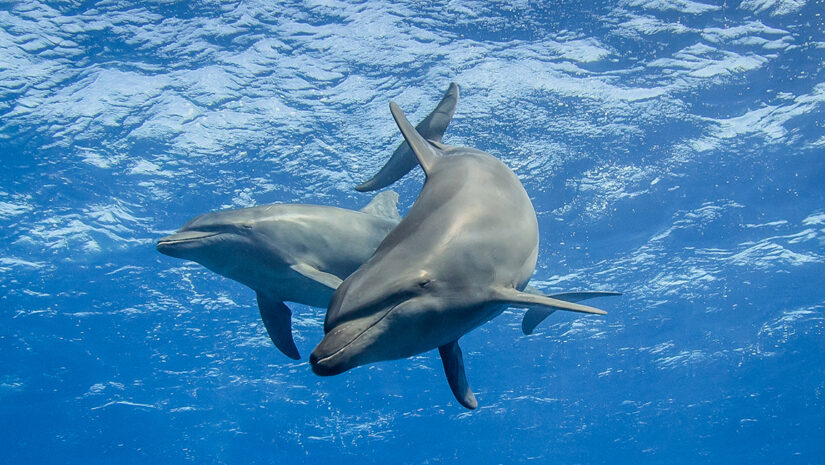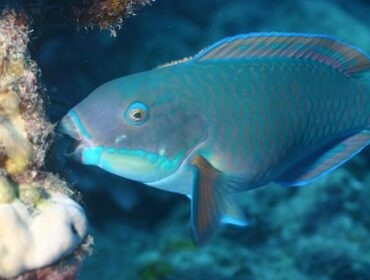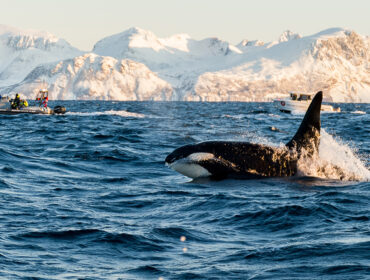With the mention of Dolphins, people instantly picture the quintessential Bottlenose dolphin, the star of many marine shows and movies. Indeed, the bottlenose is the image of the dolphin species, with its seemingly permanent smile and reputation for its extreme intelligence. But did you know there are over 40 different species of dolphin? Ranging from the snubfin dolphin, with a tiny dorsal fin, to the Orca, which is often mistaken for a whale species as it’s sometimes referred to as a Killer whale. The killer whale is, in fact, the world’s largest dolphin. Here’s a look at some Dolphin species to help you get to know your dolphins better.
Bottlenose Dolphin
Perhaps the Bottlenose is one of the best-known cetaceans (order of dolphin). They can be described as a robust dolphin with a short and stubby beak. Although these dolphins can display various colors, they are light gray to slate gray on the upper part of the body, with shading on lighter sides and pale, pinkish gray on the belly. An adult can grow to 8-12 feet (2.5-3.8 m). Bottlenose dolphins are found worldwide in temperate and tropical waters. But frequently seen in harbors, bays, lagoons, estuaries, and river mouths. This is the dolphin most commonly seen along the shores of the United States.
Humpback Dolphin
These light-colored dolphins range from yellow to pink to almost white or medium grey. They are very similar to bottlenose dolphins in structure, except they have long, slender beaks and a broad-based dorsal fin that slopes backward. There are two varieties of this kind of dolphin. The Indo-Pacific Humpback is found along the coast of the Indian Ocean from South Africa to Australia, and the Pacific Humpback is found close to shore along the coast of West Africa.
Spotted Dolphin
Known for their distinctive spotted coloration all over their body, spotted dolphins are fast swimmers and keen bow-riders, prone to acrobatic aerial displays. They only begin to get their spots as juveniles. Once the animal matures, the spots become denser and spread until the body appears black with white spots at full maturation. Found commonly around The Bahamas, the dolphins in this region have become habituated to human contact.
Pacific White Sided Dolphin
The Pacific White-sided Dolphin has three distinct colors. The chin, throat, and belly are creamy white, and the beak, flippers, back, and dorsal fin are dark gray. Plus, a light gray stripe runs from above the eye to below the dorsal fin, where it thickens along the tailstock. The Pacific White-sided Dolphin is highly active and is known to approach boats and bow rides readily. They often swim in large groups of 90 individuals and sometimes with supergroups of more than 300. Their beak is tiny and black, with 42-64 teeth on both their upper and lower jaws.
Australian Snubfin Dolphin
Found off the coast of Australia, the snubfin dolphin is tri-colored, brownish on the top, lighter brown along the sides, and has a white belly. They have a rounded forehead, very unlike other dolphins, and a tiny, “snubby” dorsal fin that distinguishes them from other dolphins in their range.
Pilot Whale
Although named whales, pilot whales come from the oceanic dolphin family (Delphinidae). They were called such because their behavior resembles that of other larger whales. There are two species of Pilot whales- the Long-finned Pilot Whale and the Short-finned Pilot Whale. Pilot Whales are jet black or very dark grey. They can measure up to 16 feet (4.9 m) and weigh up to 1.5 tons. They are the most widely distributed marine mammals in the cetacean order and are found almost all over the world in temperate and tropical waters.
Killer Whale/ Orca
Another case of mistaken identity is killer whales, which are dolphins. Their jet black, white, and grey markings, along with a tall dorsal fin in the case of males, make them easy to distinguish. Killer whales are regarded as apex predators and lack natural predators. Orcas live in small, close-knit, life-long pods and have one blowhole. Males typically range from 6 to 8 meters (20–26 ft) long and weigh more than 6 tonnes. Females are smaller, range from 5 to 7 meters (16 to 23 ft), and weigh about 3 to 4 tonnes.




